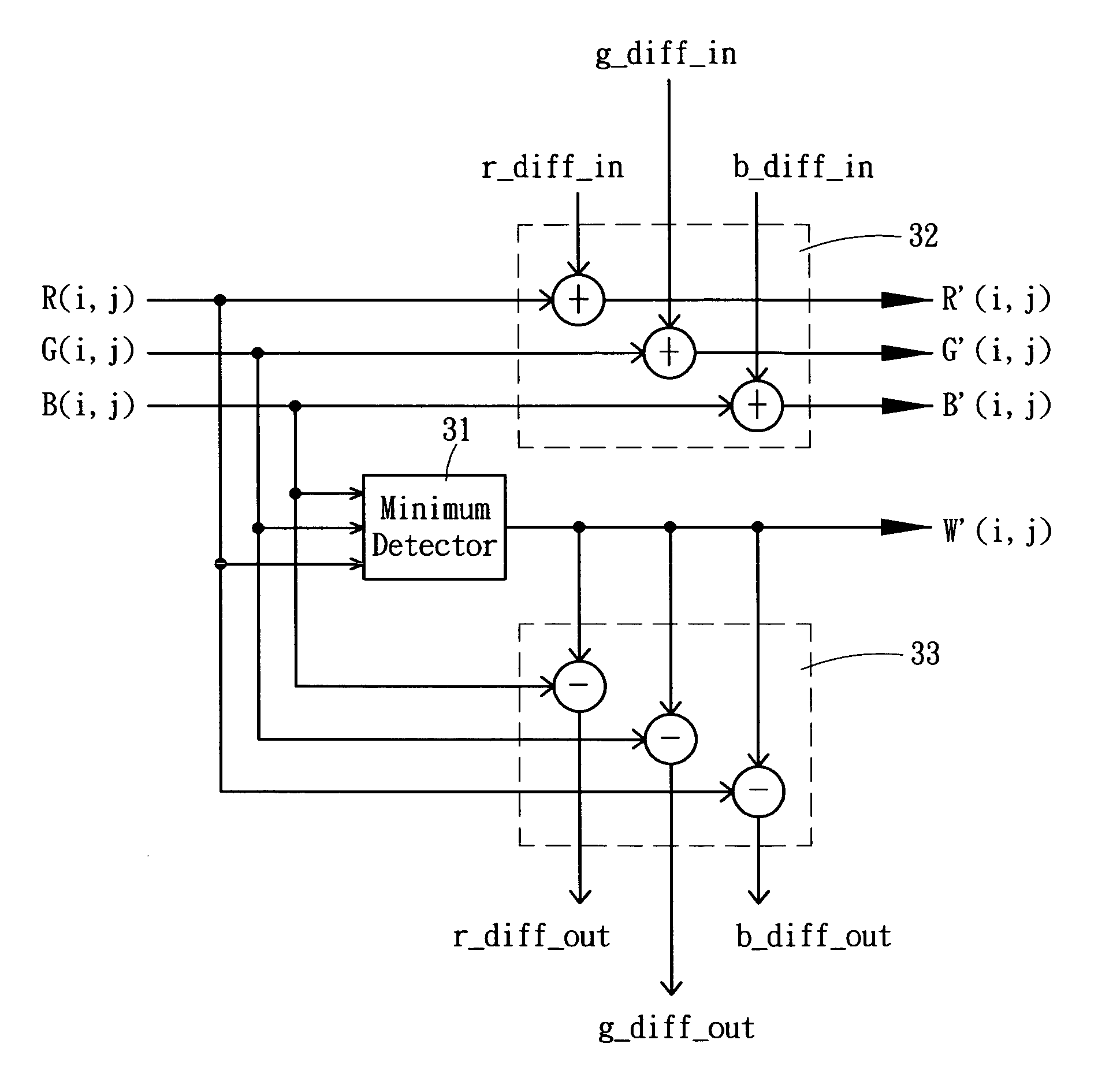Method and apparatus for four-color data converting
a technology of color data and conversion methods, applied in the direction of color signal processing circuits, color television details, brightness and chrominance signal processing circuits, etc., can solve the problems of affecting the original image hue and saturation cannot be preserved, so as to achieve the effect of enhancing the luminance of the displayed image color
- Summary
- Abstract
- Description
- Claims
- Application Information
AI Technical Summary
Benefits of technology
Problems solved by technology
Method used
Image
Examples
Embodiment Construction
[0039] The detailed descriptions for content and technology of this invention associate with figures are as follows.
[0040] Please refer to FIG. 11, which is the schematic diagram for the calculation of the present invention.
[0041] A minimum-value extractor 31 is used to receive the data of the three original colors R(i,j) G(i,j) B(i,j) of the pixel, and to extract the minimum value min(r, g, b) to be the white color data value w of the pixel.
[0042] A subtraction unit 33 is used to calculate color-difference values r_diff, g_diff, and b_diff, wherein the color-difference values r_diff, g_diff, and b_diff are obtained by subtracting the white color data value w from the data r, g, b of the three original colors R(i,j) G(i,j) B(i,j) of the pixel, respectively. And then the color-difference values (r_diff, g_diff, and b_diff) output from the subtraction unit 33 compensates the neighboring pixels.
[0043] An addition unit 32 is used to add the color-difference values output from the ne...
PUM
 Login to View More
Login to View More Abstract
Description
Claims
Application Information
 Login to View More
Login to View More - R&D
- Intellectual Property
- Life Sciences
- Materials
- Tech Scout
- Unparalleled Data Quality
- Higher Quality Content
- 60% Fewer Hallucinations
Browse by: Latest US Patents, China's latest patents, Technical Efficacy Thesaurus, Application Domain, Technology Topic, Popular Technical Reports.
© 2025 PatSnap. All rights reserved.Legal|Privacy policy|Modern Slavery Act Transparency Statement|Sitemap|About US| Contact US: help@patsnap.com



